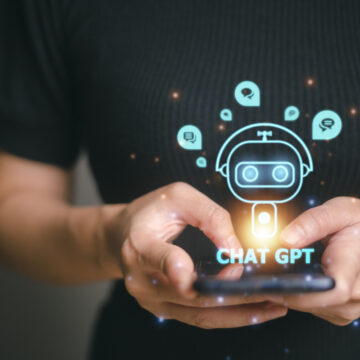Blog
What is Chat GPT?

And What Does It Have to Do with Assistive Technology?
Chat GPT stands for Chat Generative Pre-Trained Transformer and was developed by an AI research company, Open AI. It is an artificial intelligence (AI) chatbot technology that can process our natural human language and generate a response. Simply put – you can ask Chat GPT a question, and it will give you an answer.
For example, we asked Chat GPT, “What is assistive technology?”:
Assistive technology refers to any device, equipment, or software that is designed to assist people with disabilities in performing tasks that might otherwise be difficult or impossible to perform.
However, it is so much more than that. You can ask it to explain quantum mechanics, help you plan a fun day in New York City as a tourist, write computer code or solve mathematical equations.
The latest version of GPT, GPT 4, can process images or create a design.
While there are benefits to Chat GPT, there are also some limitations:
- It may occasionally generate incorrect information.
- It may occasionally produce harmful instructions or biased content.
- It has limited knowledge of the world and events after 2021. Which means you would be unable to get answers to questions such as, “What is the weather like today” or “Why didn’t my favorite baseball team play well yesterday?”
What Does Chat GPT Have to Do with Assistive Technology?
Be My Eyes and Envision AI have announced a beta version of GPT integration with their technologies!
Be My Eyes is a free app that connects people who are blind or visually impaired to a volunteer for sighted assistance. With the integration of GPT, the user can now choose to converse with a virtual volunteer and ask questions about an image. For example, you can ask it to tell you what’s in the refrigerator and then ask what dish you could make with those ingredients!
Envision has a free app, Envision AI, or glasses for purchase which reads text aloud, describes a scene, recognizes colors, money, and people, and finds objects. The glasses utilize the Google glasses camera, which also has the ability to call a friend for sighted assistance. With the addition of GPT AI technology, a person wanting to know what’s on the menu at a restaurant can ask for any information they want, followed by more specifically and importantly, “what are the deserts?”
We asked the CEO and Co-Founder of Envision, Karthik Mahadevan, about his thoughts on AI and the future. “The latest GPT developments from Open AI, unlock a huge potential in what is possible with processing documents and images on the Envision Glasses. The AI-powered smart glasses are now capable of understanding complex questions and prompts from a user in Natural Language and they have the intelligence to understand the context of a document or an image,” Karthik says. “These amazing developments bring us closer to achieving the ultimate goal of having an AI so advanced, that it behaves and feels like constantly having a sighted assistant walking next to you.”
AI technology is a real game changer that may give access to many more future possibilities. The Lighthouse Guild Technology Center will continue to monitor this life-changing innovation and other technologies as they have the potential to inspire people with vision loss to attain their goals.
Questions? Email us!
What is the Next Innovation in Accessible Technology?
Check out Lighthouse Guild’s On Tech and Vision, podcast where Dr. Cal Roberts talks to the visionaries with big ideas about how technology can make life better for people with vision loss. Join Dr. Roberts when he talks to Karthik Kannon, Chief Technology Officer of Envision, about AI in the episode: AI Revolutionizes Vision Tech, Ophthalmology, and Medicine as We Know It.
Join our Mission
Lighthouse Guild is dedicated to providing exceptional services that inspire people who are visually impaired to attain their goals.
